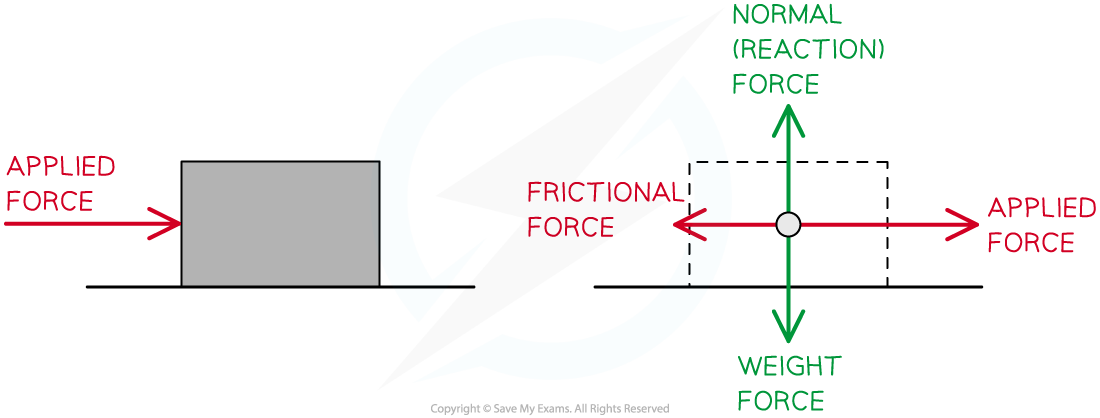Free-body Force Diagrams (Edexcel International A Level (IAL) Physics) : Revision Note
Free-body Force Diagrams
Free body diagrams are useful for modeling the forces that are acting on an object
Each force is represented as a vector arrow, where each arrow:
Is scaled to the magnitude of the force it represents
Points in the direction that the force acts
Is labelled with the name of the force it represents or an appropriate symbol
Free body diagrams can be used:
To identify which forces act in which plane
To resolve the net force in a particular direction
Simple Free Body Diagrams
The rules for drawing a free-body diagram are the following:
Rule 1: Draw a point in the centre of mass of the body
Rule 2: Draw the body free from contact with any other object
Rule 3: Draw the forces acting on that body using vectors with correct direction and proportional length

Free body diagrams can be used to show the various forces acting on objects
Forces on a Particle or an Extended but Rigid Body
Free body diagrams simplify problems by reducing complex shapes into simple one
Any object can be thought of as a particle
Even something as large as the Earth can be modelled as a point mass for most calculations
Objects can also be thought of as being extended but rigid bodies
This simply means that all parts stay in the same position relative to each other when the object moves

Point particle representation of the forces acting on a moving object
The below example shows an object sitting on a slope in equilibrium

Three forces on an object in equilibrium form a closed vector triangle
Worked Example
Draw free-body diagrams for the following scenarios:
a) A picture frame hanging from a nail
b) A box sliding down a slope
Answer:
Part (a)
A picture frame hanging from a nail:

The size of the arrows should be such that the 3 forces would make a closed triangle as they are balanced
Part (b)
A box sliding down a slope:

There are three forces acting on the box:
The normal contact force, R, acts perpendicular to the slope
Friction, F, acts parallel to the slope and in the opposite direction to the direction of motion
Weight, W, acts down towards the Earth
Examiner Tips and Tricks
When labeling force vectors, it is important to use conventional and appropriate naming or symbols such as:
w or Weight force or mg
N or R for normal reaction force (depending on your local context either of these could be acceptable)
Getting used to this notation will make labelling free-body diagrams automatic - leaving you time to focus on the Physics rather than the process. This is crucial as a good diagram will show you exactly what to include in your calculations.

You've read 0 of your 5 free revision notes this week
Sign up now. It’s free!
Did this page help you?
